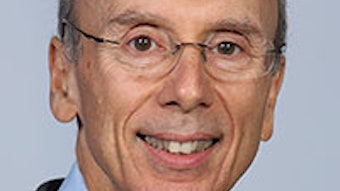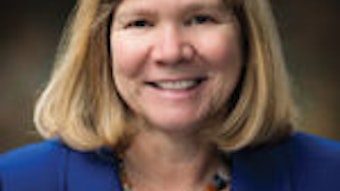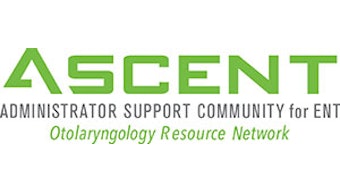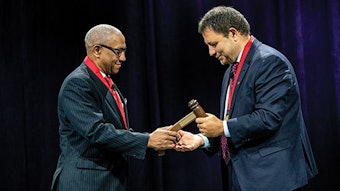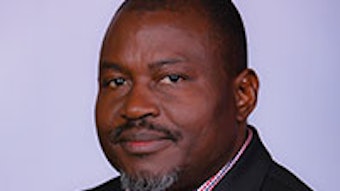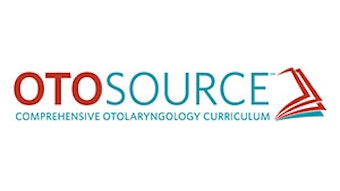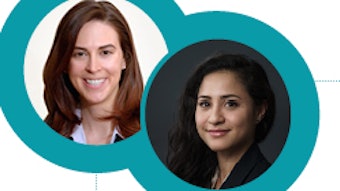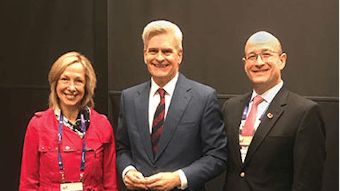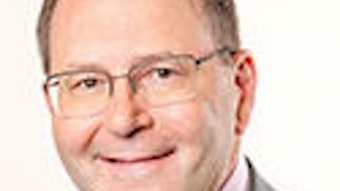A unified approach to patient care
I am still riding the wave of excitement and energy that accompanied our recent Annual Meeting in New Orleans, starting with an unforgettable Welcome Ceremony and President’s Reception, led by Albert L. Merati, MD, Immediate Past President.
I am still riding the wave of excitement and energy that accompanied our recent Annual Meeting in New Orleans, starting with an unforgettable Welcome Ceremony and President’s Reception, led by Albert L. Merati, MD, Immediate Past President. I am told we set attendance records for an AAO-HNSF Annual Meeting, which provided ample opportunities and access to scientific education (hands-on, interactive, and didactic), networking, work/career information/interviews, practice management, medical products/services, and equipment at the OTO Experience, and included attendees from across the globe.
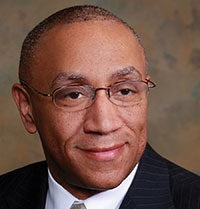 Duane J. Taylor, MD AAO-HNS/F President
Duane J. Taylor, MD AAO-HNS/F PresidentOur location in “the Big Easy” did not disappoint, as we all probably picked up a few pounds with some of the best possibilities for our palates. However, this was not without a balance of the wellness offerings that included OTOs on the Run 5K, sunrise yoga, and talks centered on staying healthy and avoiding burnout. Our many honorary guest lecturers, who included Dana M. Thompson, MD, MS; Rahul K. Shah, MD, MBA; Andrea Vambutas, MD; Baran D. Sumer, MD; and Professor Hisham Mehanna, PhD, MBChB, FRCS, FRCS (ORL-HNS), were insightful, thought-provoking, educational, and, most importantly, memorable. They certainly all paid sufficient tribute to the individuals for whom these lectures were named.
Finally, the Academy’s presence in the city brought with it a spirit of giving back as the William Harry Barnes Society hosted a lunch for undergraduate premed students at Xavier University to share the experiences and fulfillment of our specialty. Thanks to our incredible staff for their hard work and thanks to you for your attendance.
“I see patient involvement with their care—complemented by the right knowledge that we provide (in a variety of ways)— as an opportunity that may enable us to better serve our patients.”
As I mentioned in my previous column, one of the areas I would like to focus on during my term as President is helping our patients to become more involved in their care. We are faced daily with the dilemma of how we as specialists can effectively assist in this process when we already have forces such as EMR documentation, MIPS, and prior authorizations competing for a significant portion of our time and that of our staff. Many of us associate the concept of patient-centered care with the primary care physician—and much of it does fall within the primary care provider’s purview. However, our understanding of this is essential in helping to assure our patient compliance.
The Institute of Medicine defines providing patient-centered care as providing “care that is respectful of and responsive to individual patient preferences, needs, and values and ensuring that patient values guide clinical decisions.” In research conducted by Picker Institute and Harvard Medical School, there are eight principles of patient-centered care that include:
- Respect for patient preferences
- Coordination and integration of care
- Information and education
- Physical comfort
- Emotional support
- Involvement of family and friends
- Continuity and transition
- Access to care
I realize that there will be divergence of opinion on how much we as physicians should be allowing patients to guide their own care; however, it is truly a partnership if we strive to achieve the best outcomes. These eight principles, along with health literacy and cultural competency, are ones that—if considered and addressed—can only help to assist us with having happier, healthier, and more knowledgeable patients with successful treatments.
We are in an age now where we must find a balance of how we can maximize digital technology, discussions with our primary care colleagues, patient portals, practice websites, waiting room information, and now the AAO-HNSF website ENThealth.org, to empower our patients to proactively partner in their care. I see patient involvement with their care—complemented by the right knowledge that we provide (in a variety of ways)— as an opportunity that may enable us to better serve our patients.
